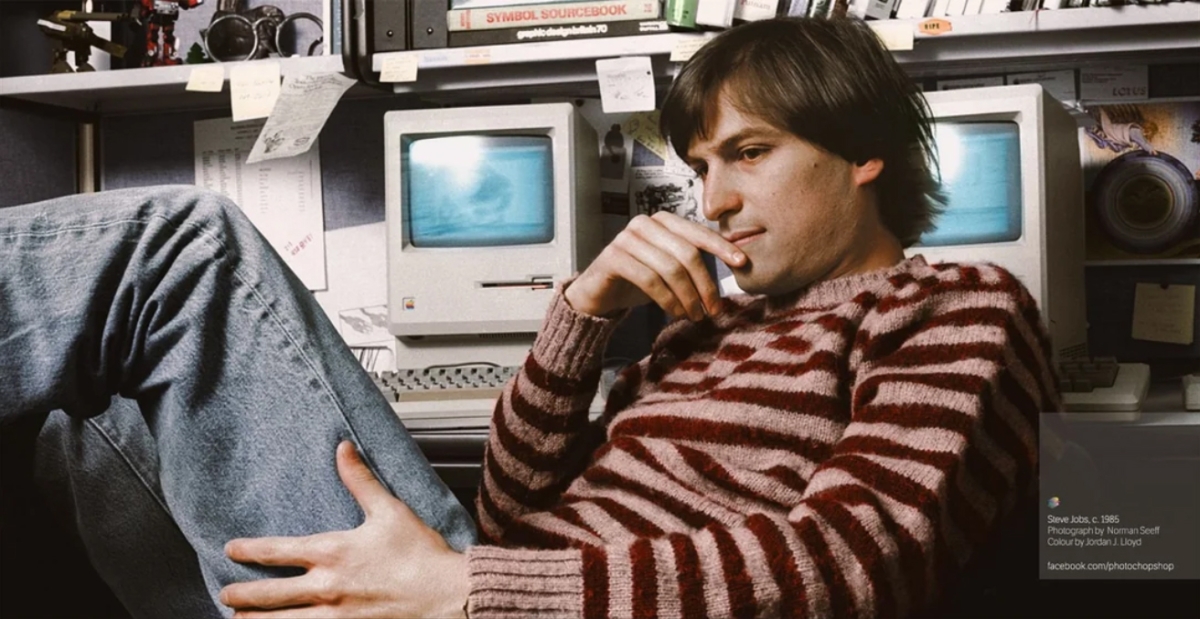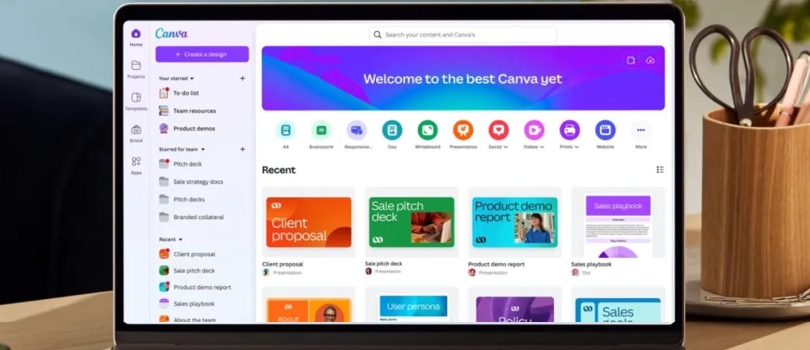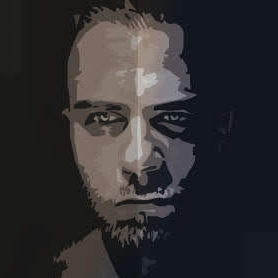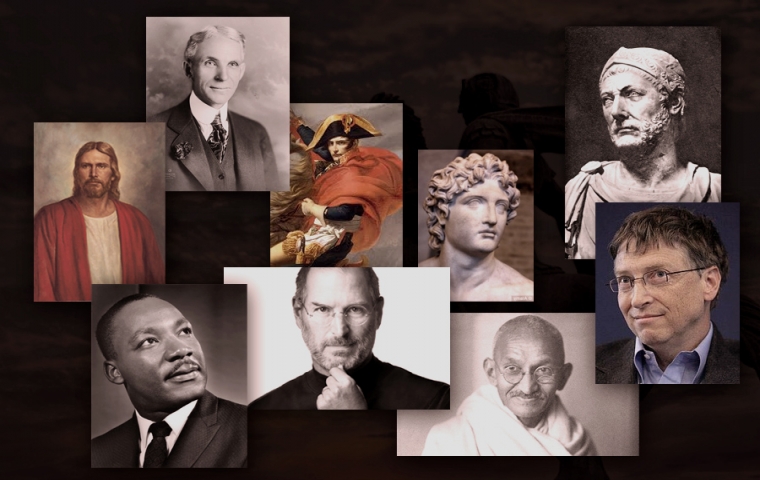Start with the Customer Experience: Lessons from Success and Failure in Technology Adoption
Steve Jobs once said: “Start with the customer experience and work backward to the technology.” This simple yet profound philosophy is exactly what separates the groundbreaking from the forgettable.

Some products integrate so seamlessly into our daily lives that they solve problems we didn't even realize we had. Yet, countless others, despite bold promises, fail to connect and end up forgotten in a junk drawer. What causes this to happen?
Steve Jobs captured this contrast when he said: “Start with the customer experience and work backward to the technology.” This philosophy is more than just a clever quote; it’s the foundation of designing products that resonate with users.
In this article, we’ll dive into stories of success and failure—real, tangible examples of how focusing on (or ignoring) the customer experience can shape the fate of a project. Along the way, we’ll uncover actionable lessons for anyone designing a product, leading a team, or simply dreaming big.
When Technology Misses the Mark: My Personal Experience
Over the years, I’ve worked on several projects that fell into the trap of prioritizing technology trends over actual business needs.
One example I vividly remember: a mobile app project driven more by the booming popularity of apps than by a clear purpose. The company I was with became convinced they needed to jump on the app bandwagon because every competitor seemed to have one, and the fear of being left behind pushed leadership to greenlight the project without a defined strategy.
The app was designed, developed, and launched with significant investment, but it didn’t address any specific pain points for the company’s customers or internal workflows. It was a generic offering with no connection to the company’s business objectives. The app simply replicated information that was already available on the company’s website, offering no new functionality or meaningful native interactions that leveraged the potential of mobile devices. Predictably, it failed to gain traction. Users didn’t download or engage with the app, and it quickly became an underutilized resource.
Looking back, the failure wasn’t due to a lack of effort or technical skill. The team was talented, and the app itself was well-built. The problem was that we started with the technology instead of starting with the customer experience.
Understanding what problem you’re solving before writing a single line of code
Another example involved a small React application for a client that was relatively straightforward in its functionality. However, instead of using the simple and built-in Context API to manage the app’s state, Redux was introduced. The decision wasn’t driven by the project’s needs but rather by the team’s familiarity with Redux. It was the tool they had always used in React projects, and it seemed like the default choice.
This approach introduced unnecessary complexity to a project that could have been managed more efficiently with lighter tools like Context API, which is designed for managing smaller and less intricate state requirements. Redux required additional libraries like Redux Toolkit and middleware for handling asynchronous actions, as well as boilerplate code for setting up actions, reducers, and the store. This setup added to the configuration time and slowed the development process.
This example reinforced the importance of assessing a project’s actual requirements before defaulting to familiar technologies. Just because a tool is popular or well-known doesn’t mean it’s the right fit. Simpler solutions can often lead to faster delivery and better alignment with both user and business needs.
Insights on Working Backward from the Customer Experience
- Empathy as the Foundation: Successful projects begin by deeply understanding the customer’s problems, needs, and aspirations. This step is critical in defining the right direction for planning and execution.
- Technology as a Tool, Not the Goal: Technology should act as an enabler for achieving a seamless user experience. Choosing or building the right tech is vital but secondary to defining the user journey.
- Planning Shapes Success: Focusing on customer experience in the planning phase ensures that the technical stack is designed to address specific user needs. It prevents unnecessary complexity and avoids overengineering.
- Architecture as the Execution Framework: Once the customer journey is defined, the architecture serves as the backbone for implementing these plans. Every technical decision, from frameworks to infrastructure, must support the desired user experience.
Success Stories: Starting with the Customer Experience
1. Netflix: Seamless Streaming for Everyone

-
Customer Experience Goal: Deliver uninterrupted, high-quality video streaming on any device.
-
Technologies Adopted:
-
Open Connect CDN: Built to cache popular content closer to users, minimizing buffering.
-
Adaptive Bitrate Streaming: Adjusts video quality dynamically based on network conditions.
-
Microservices Architecture: Using Java and Spring Boot, Netflix ensured scalability and fault tolerance for millions of users.
-
-
Why It Worked: Netflix tailored its technology stack to address customer pain points like buffering and accessibility, creating a global standard for streaming. By implementing Open Connect CDN, Netflix reduced latency by caching popular content closer to users, effectively minimizing buffering. Adaptive Bitrate Streaming further ensured uninterrupted playback by dynamically adjusting video quality based on network conditions. Additionally, the Microservices Architecture provided scalability and fault tolerance, enabling seamless access for millions of users regardless of demand surges.
2. Slack: Simplifying Team Communication
-
Customer Experience Goal: Provide a user-friendly, real-time messaging tool accessible across devices.
-
Technologies Adopted:
-
Electron: Ensured consistent cross-platform desktop experiences.
-
WebSocket Protocol: Enabled real-time updates for instant messaging.
-
React and Redux: Supported dynamic, responsive, and intuitive user interfaces.
-
-
Why It Worked: By focusing on seamless communication, Slack’s technology choices ensured speed, reliability, and ease of use, making it a favorite for remote teams.
3. Stripe: Developer-Focused Payment Integration
-
Customer Experience Goal: Simplify payment integration for developers with robust APIs.
-
Technologies Adopted:
-
Ruby and Python: Used for backend services, allowing for rapid iterations.
-
React: Powers the Stripe Dashboard and embeddable components for a smooth interface.
-
PostgreSQL: Provides reliable and scalable transaction management.
-
-
Why It Worked: Stripe focused on creating a developer-friendly experience, with APIs and documentation backed by reliable technologies that empowered businesses to integrate payments effortlessly.
4. Airbnb: Personalization and Trust for Travelers
-
Customer Experience Goal: Help travelers discover unique stays while fostering trust and personalization.
-
Technologies Adopted:
-
Ruby on Rails: Enabled rapid prototyping and iteration in Airbnb’s early days.
-
Elasticsearch: Delivered fast, accurate property searches.
-
TensorFlow: Powered machine learning algorithms for personalized recommendations.
-
-
Why It Worked: Airbnb’s technology choices supported its goals of trust, ease of discovery, and personalization, transforming the way people travel.
5. Additional Success Story: Canva

Customer Experience Goal: Make graphic design accessible to non-designers.
-
Technologies Adopted:
-
HTML5 and JavaScript: Delivered a responsive drag-and-drop interface.
-
Cloud Computing: Enabled users to access designs from anywhere.
-
Pre-built Templates: Simplified the design process for users.
-
-
Why It Worked: Canva identified that simplicity, not power, was the priority for users. By focusing on accessibility, it made professional design tools available to everyone.
Failure Stories: Starting with Technology First
1. Google Glass: Technology Without a Clear Use Case
-
What Went Wrong: Google focused on showcasing AR and wearable technology without understanding what customers needed.
-
Technologies Used:
-
Cutting-edge AR hardware and software integration.
-
Voice recognition and touchpad functionality.
-
-
The Problem: Lack of practical use cases and privacy concerns alienated users.
-
Outcome: Google Glass failed to gain traction, becoming a cautionary tale of technology-first thinking.
2. Microsoft Zune: Chasing the Competition
-
What Went Wrong: Microsoft focused on competing with the iPod’s technical specs rather than understanding why users loved the iPod.
-
Technologies Used:
-
Advanced music-sharing features.
-
Hardware designed to rival Apple’s devices.
-
-
The Problem: Zune ignored user preferences for ecosystem integration and seamless library management.
-
Outcome: The Zune failed to resonate with customers, losing out to Apple’s more user-centric design.
3. Nokia’s Symbian OS: Clinging to Legacy Technology
-
What Went Wrong: Nokia stuck with its outdated Symbian OS while competitors like Apple and Google built ecosystems that emphasized usability and app development.
-
Technologies Used:
-
Legacy Symbian platform optimized for feature phones.
-
-
The Problem: Nokia failed to adapt to the growing demand for user-friendly smartphones and app ecosystems.
-
Outcome: Nokia’s reliance on legacy technology cost it its dominant market position.

Key Insights
From Success Stories :
-
Start with the User: Understand customer pain points and desires before choosing or building technologies.
-
Select Purpose-Driven Tech: Align every technical decision with the intended user experience.
From Failure Stories:
-
Technology Alone Isn’t Enough: Even the most advanced tools can fail without a clear customer focus.
-
Understand the "Why" Before the "How": Avoid building solutions in search of a problem; let user needs drive technical choices.
Conclusion
The most successful products and services are built by starting with the customer experience and working backward. Companies like Netflix, Stripe, and Airbnb illustrate how purpose-driven technology choices deliver transformative solutions. Conversely, failures like Google Glass and Microsoft Zune highlight the pitfalls of prioritizing technology over customer needs.
By putting users first, developers, engineers, and businesses can ensure that every decision—from planning to architecture—serves the ultimate goal: creating value through meaningful, user-centered solutions.
What Do Great Leaders Have in Common?
Recent research reveals a sobering reality: 80% of leaders today fail to make a positive impact within their first two years in leadership roles....
Blame IT Syndrome - Why IT People are always the First to be Blamed when Things Go Wrong?
Aliens... bunch of weirdos and technical wizards with strange words and outlandish languages... They don't belong to us... they don't fit in...




